The children’s story of “Momotaro”
The children’s story of “Momotaro” is known to every Japanese…, but I found the original story of “Momotaro”!
In Japan, from north of Aomori Prefecture to south of Kagoshima Prefecture, many legends use children’s story “Momotaro” as a model. “Momotaro” is a story in which Momotaro, born from a peach, slay demons in Onigashima (island of demons) with a dog, a monkey, and a pheasant. However, in particular, Okayama Prefecture, Kagawa Prefecture, and Aichi Prefecture are famous for three great traditional places of “Momotaro”.
The story of “Momotaro” passed down across Japan seems to be closely related to the unification war of Japan by Yamato administration (the name of the Imperial Court until the 7th century).
The following is the most popular synopsis of “Momotaro”.
Synopsis of the folktale “Momotaro”
Once upon a time, there were old couples. The old man went to the mountain to gather firewood and the old woman went to the river for laundry. When the old woman was doing laundry in the river, a big peach came floating down the river.
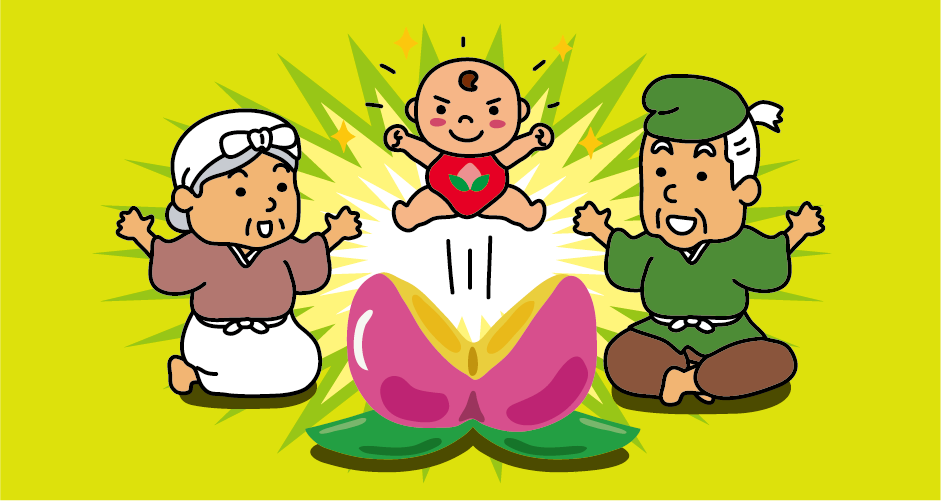
When she took a peach back home and tried to eat with the old man who came back from the mountain, the peach was split into two and a bright boy came out of the peach.
They were very happy because they do not have children. They named the boy Momotaro because he was born from the peach and they raised him with great care. (In Japanese, momo means peach and taro is a popular name for a boy.)
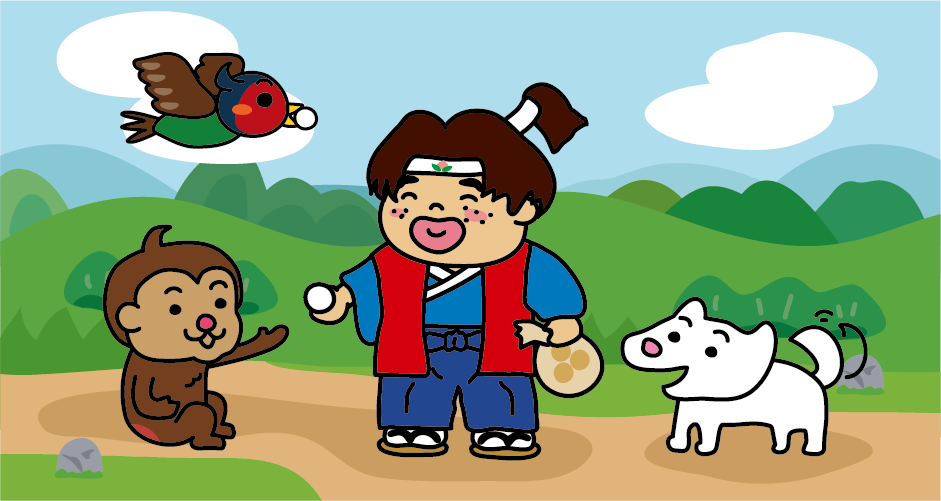
The grown-up Momotaro went to Onigashima to slay demons. Then the old woman made Kibi Dango (millet cakes) for Momotaro. On the way, a dog, a monkey and a pheasant came and ask for Kibi Dango. Momotaro shared Kibi Dango with them and went to Onigashima together.
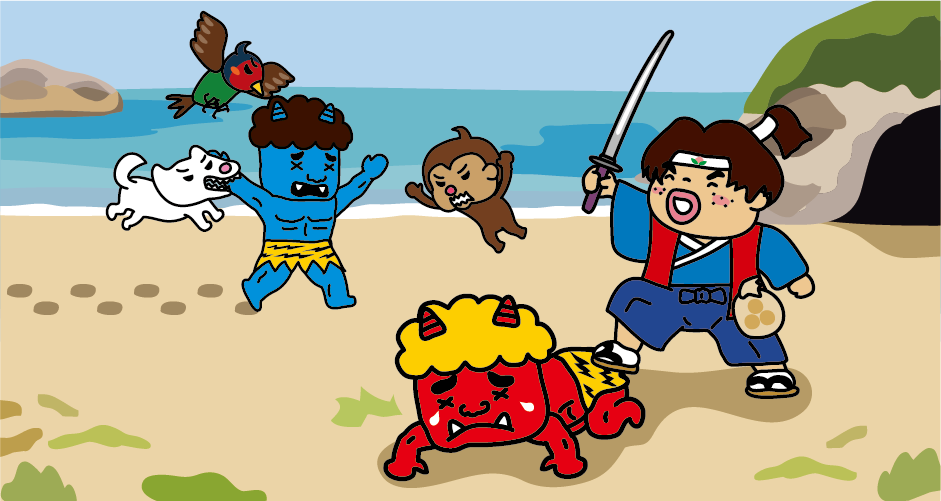
On Onigashima, demons were in the midst of a drinking party, then the dog bit, the monkey scratched, the pheasant pecked at the demons and they slay demons. Then Momotaro carried treasures collected by demons, loaded them into the cart and brought them back to the village. They all lived happily ever after.
“Legend of Ura”, the original story of “Momotaro”
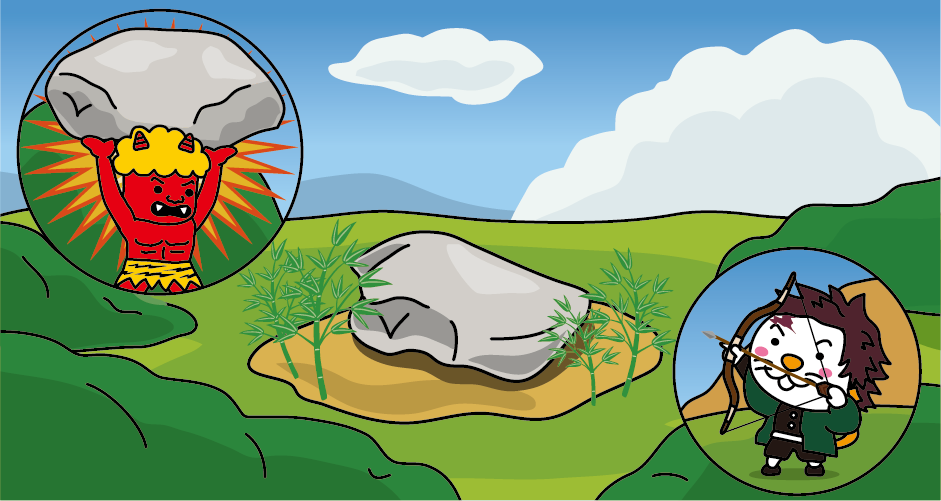
It is said that the original story of “Momotaro” is the Japanese myth “Legend of Ura” of “Kibitsuhiko-no-Mikoto” handed down to Okayama Prefecture. According to “Kojiki” and “Nihon-Shoki”, Kibitsuhiko-no-Mikoto is one of the princes of the 7th Emperor Korei. The story was that he was dispatched to Kibi Province (current Okayama and eastern Hiroshima Prefectures ruled by local clans) and suppress Ura who ruled Kibi Province. According to the legend, Ura was a foreigner and a big man who was 4m tall.
Kibitsu Shrine
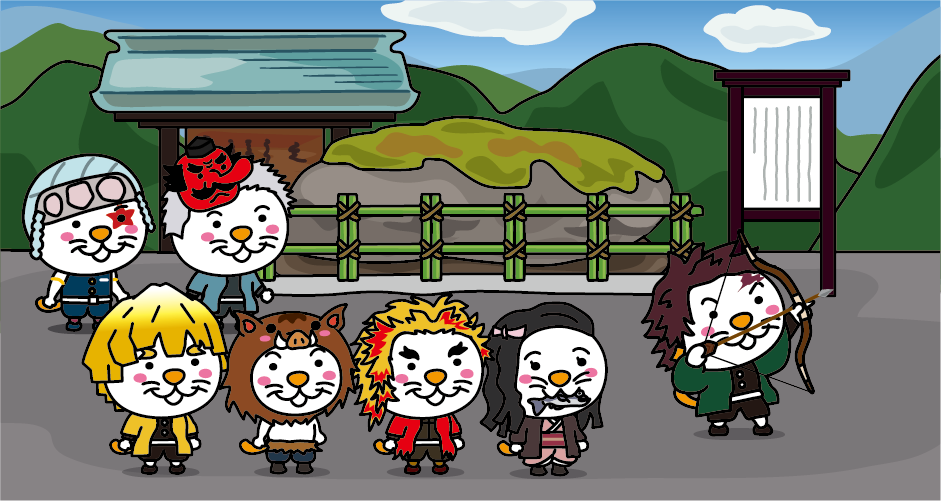
To suppress Ura, Kibitsuhiko-no-Mikoto placed a camp at “Kibitsu Shrine” in Okayama City, Okayama Prefecture. At there, Kibitsuhiko-no-Mikoto is enshrined. There is a rock (called Yaoki Iwa) that is said Kibitsuhiko-no-Mikoto put an arrow in the battle with Ura. Every January 3, a sacred ritual to exorcise a demon is held in front of “Yaoki Iwa”.
Ki castle
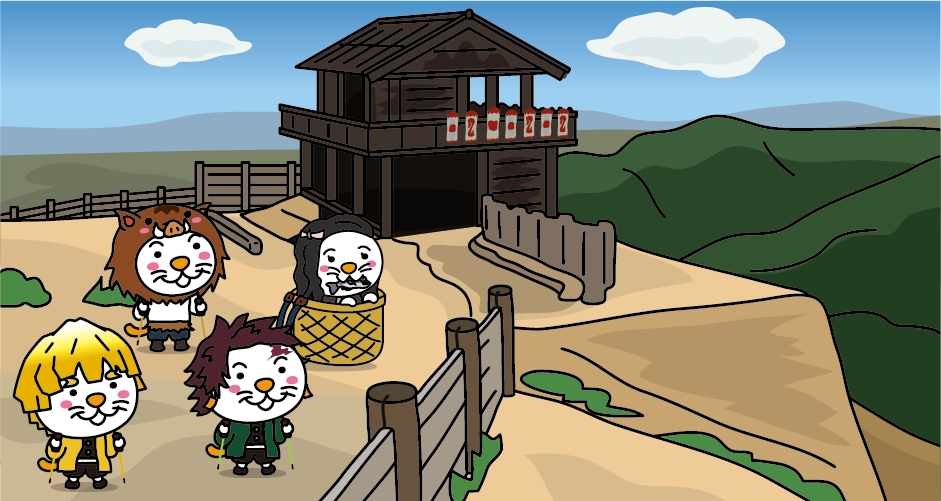
On Mt. Kijozan, 8km northwest of Kibitsu Shrine, there is a mountain castle called “Ki castle (means Demon castle)” which is one of the “Japan’s Top 100 Castle”. It is considered that in the middle of the 7th century, Yamato administration feared the invasion by Tang (ancient dynasty of China) and Silla (ancient dynasty of Korea) and built it. Also, there is a legend in ancient time, it was the castle of Ura.
Onigashima Great Cave in Megijima, Kagawa Prefecture
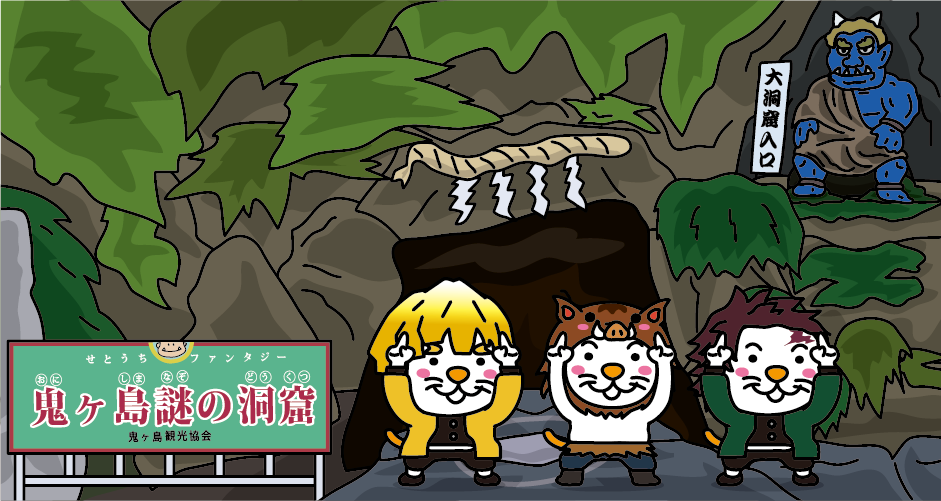
In Kagawa Prefecture, on the other side of Okayama Prefecture across the Seto Island Sea, the legend of “Momotaro” remains in connection with the story that Wakatakehiko-no-Mikoto who ruled Kibi Province with his elder brother Kibitsuhiko-no-Mikoto wiped out pirates which ravaged the Seto Island Sea. Megijima in Kagawa Prefecture is called “Onigashima” and there is a large cave (Onigashima Great Cave) that is said demons are lived.

In Takamatsu City, Kagawa Prefecture, there is a place named “Kinashi (means no demons in Japanese)” that demons have disappeared by the extermination of demons.
Onigashima in Gifu Prefecture
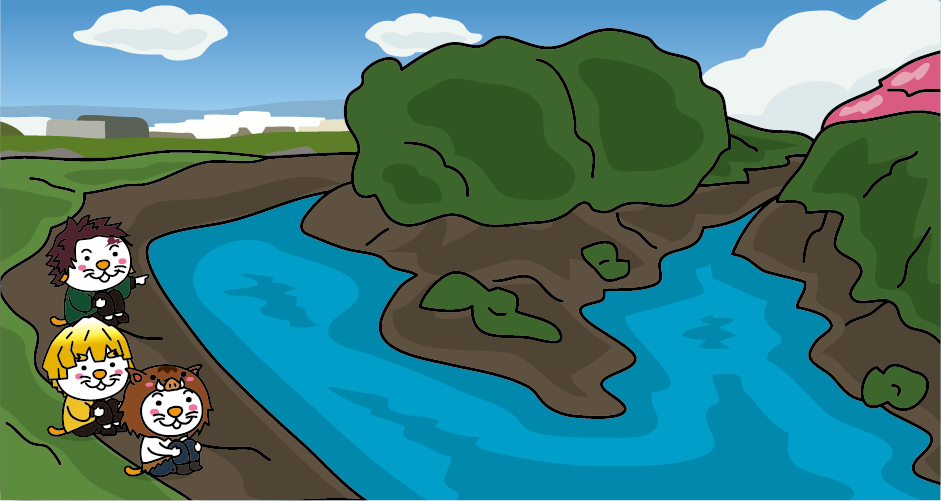
In the story of “Momotaro” handed down to Aichi Prefecture and the middle of Kiso River in Gifu Prefecture, Momotaro grew up in Inuyama City, Aichi Prefecture. In the Kani River (a branch of Kiso River) of Gifu Prefecture, there is an island called “Onigashima” and Momotaro slain demons who lived on this island. It is said the demons of Kani River were bandits.
Momotaro Shrine
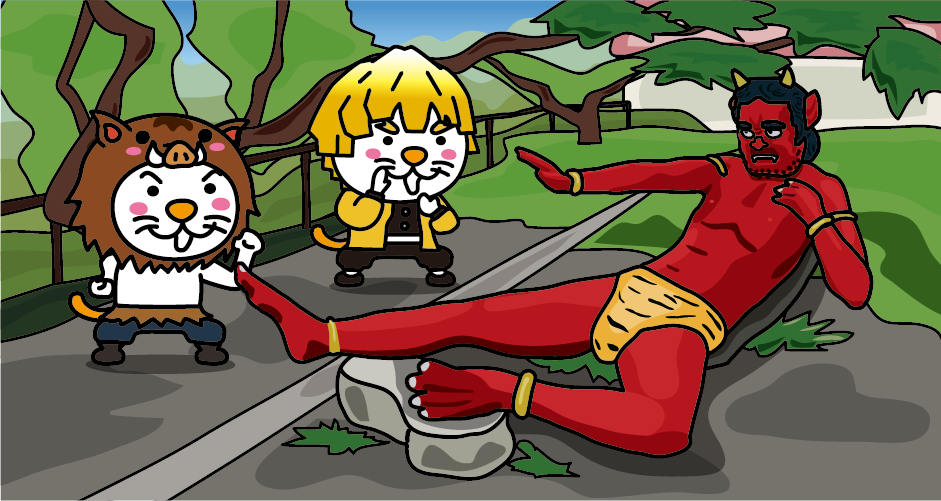
A lot of surreal monuments related to Momotaro are displayed in the precincts of “Momotaro Shrine” in Inuyama City, Aichi Prefecture.
Access to Kibitsu Shrine
It takes about 1 hour from JR Shin-Osaka Station to JR Okayama Station by Sanyo Shinkansen. Transfer to the JR Kibi Line at JR Okayama Station, and it takes about 15 minutes from JR Okayama Station to JR Kibitsu Station. Get off at JR Kibitsu Station and walk 10 minutes to Kibitsu Station.

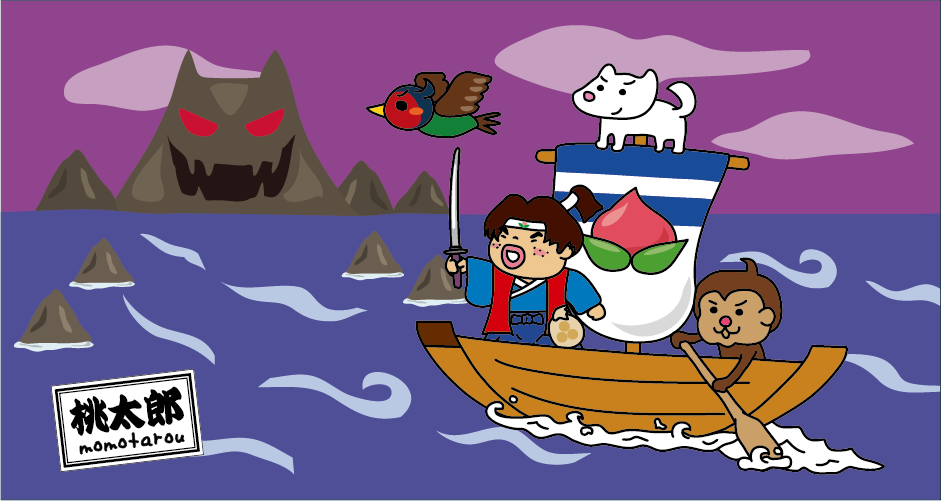
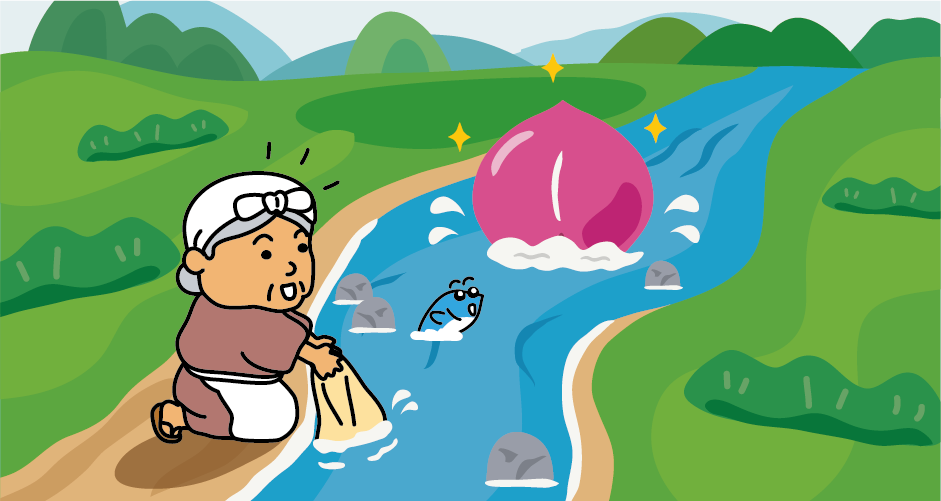


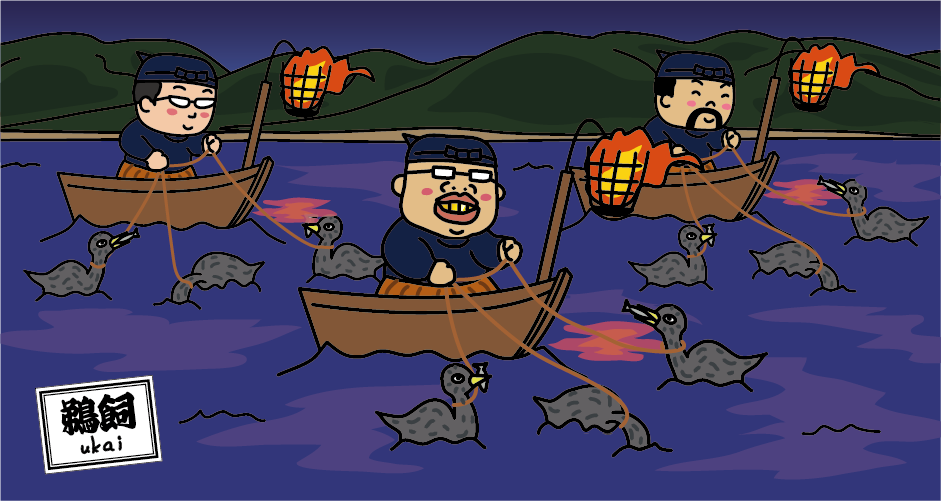


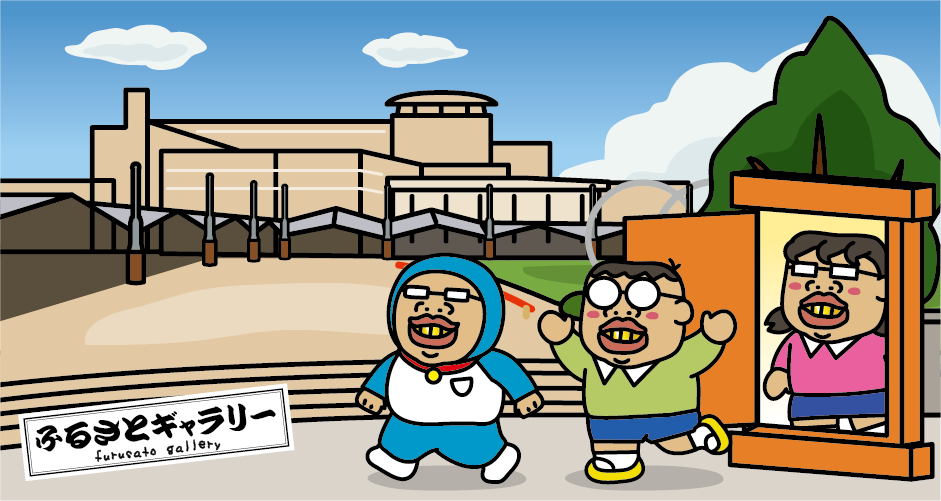

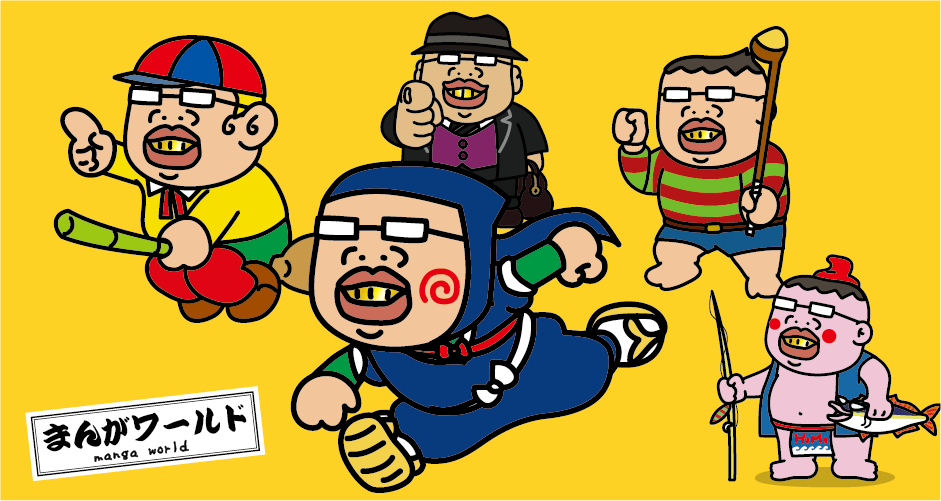
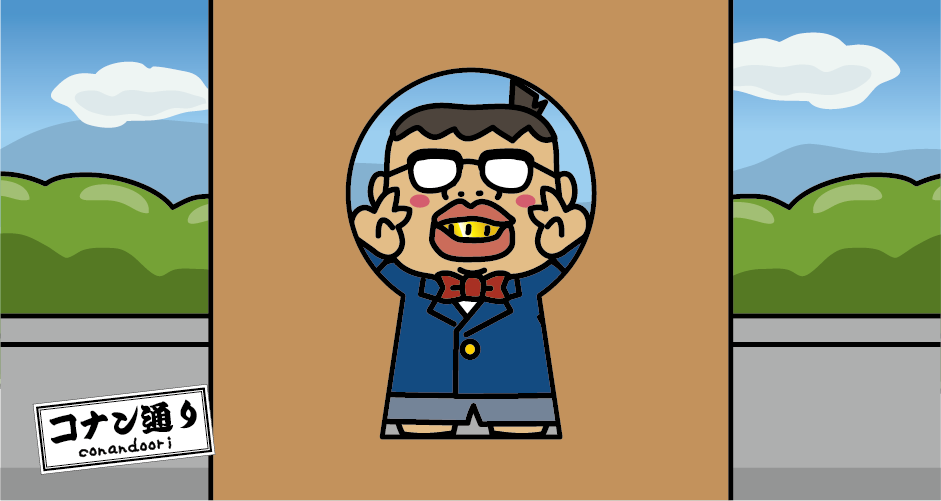


You need to login to comment on an article.